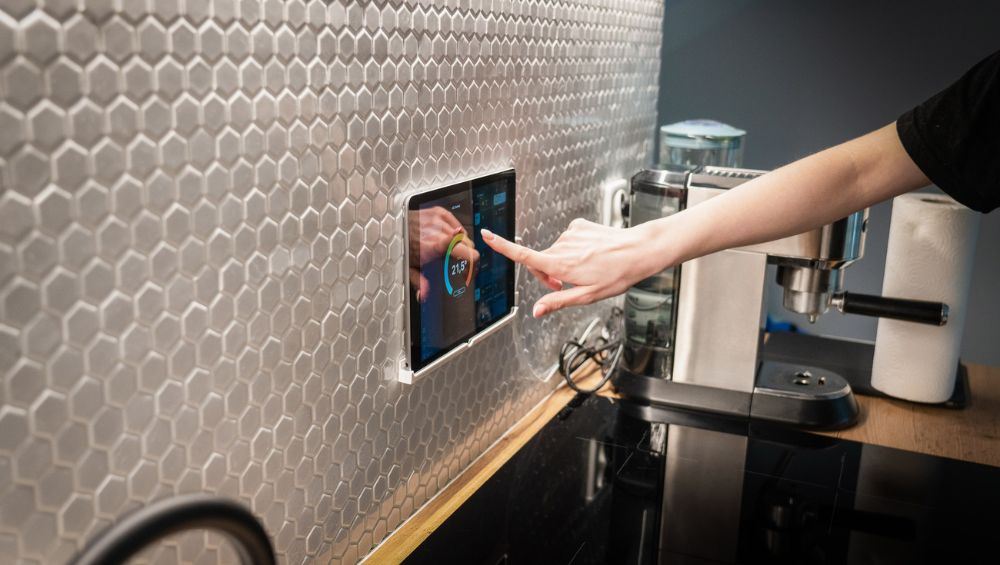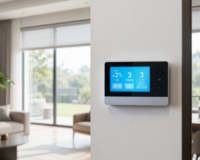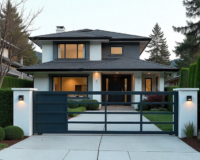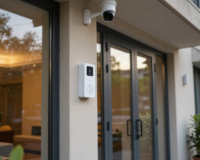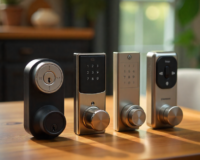The future of home living has arrived, and it’s smarter than ever before. Smart homes are no longer a concept from science fiction; they are a reality for homeowners around the world. The ability to control and automate various aspects of your home, from lighting and security to energy management and entertainment, is now within reach. In this comprehensive manual, we’ll take you through the process of configuring your smart home, ensuring that you get the most out of your connected living space. From choosing the right devices to setting up automation routines and addressing security concerns, this guide covers it all.
The Process of Configuring Your Smart Home
1. Assess Your Needs and Goals
Before diving into the world of smart home configuration, it’s essential to assess your needs and goals. Consider the following questions:
- What are your priorities? Determine what aspects of your home you want to make smarter. Common areas of interest include lighting, security, energy efficiency, entertainment, and home automation.
- What is your budget? Set a budget for your smart home project. Keep in mind that costs can vary widely depending on the complexity and scale of your system.
- Do you have a specific ecosystem preference? Some smart devices work best when they are part of a specific ecosystem, like Amazon Alexa or Google Home. Determine if you have a preference or if you want devices that are more platform-agnostic.
- What is your long-term plan? Consider how you plan to expand your smart home in the future. This can impact your initial choices for devices and hubs.
2. Choose the Right Devices
Selecting the right smart devices is a crucial step in configuring your smart home. Here are some key categories of devices to consider:
1. Smart Home Center
The heart of a smart home control system is the hub, a device that connects and manages all of your smart components. It’s like the brain, making sure everything communicates with each other and works together. You can think of it as the main part of your smart home setup. Examples include Amazon Echo Plus, Google Home, and Samsung SmartThings Hub.
2. Network and Connectivity
The backbone of any smart home is its network. Quality routers and mesh systems, like those from Netgear or Google Nest Wifi, provide stable connections and wide coverage. This is the key for all smart devices to work well together.
3. Smart Lighting
- Smart Bulbs: Replace traditional bulbs with smart LED bulbs. These can be controlled remotely, dimmed, and even change color in some cases.
- Smart Switches and Dimmers: Install smart switches or dimmers to control existing light fixtures. They provide the convenience of smart lighting without changing the bulbs.
4. Smart Security
- Smart Locks: Enhance security by installing smart locks that allow keyless entry and remote control. Many also offer access monitoring.
- Security Cameras: Install indoor and outdoor cameras for real-time monitoring and recording. Consider features like motion detection and cloud storage.
- Video Doorbells: A video doorbell offers a visual of who’s at your door, even when you’re not at home.
5. Smart Thermostats
-
- Smart thermostats: Optimize your heating and cooling systems for energy efficiency. These devices can be programmed and remotely controlled.
- Motion Sensors: These sensors can trigger various actions when motion is detected, such as turning on lights or sending notifications.
- Contact Sensors: Used for doors and windows, contact sensors can provide information about their open or closed status.
7. Voice Assistants:
- Amazon Alexa, Google Assistant, or Apple HomeKit: Consider a voice assistant as a central hub for controlling your smart devices using voice commands.
8. Smart Scales and Health Monitors:
- Smart Scales: These scales provide insights into your weight, body composition, and health metrics, often syncing data with health apps.
- Health Monitors: Devices like smart blood pressure monitors or sleep trackers can provide health-related information.
9. Smart Kitchen Appliances:
- Smart Refrigerators: Some refrigerators have touchscreens and can provide food inventory tracking and recipes.
- Smart Ovens and Cooktops: These appliances can be controlled remotely and often include recipe suggestions and cooking tips.
10. Entertainment:
- Smart TVs and Streaming Devices: Upgrade your entertainment system with smart TVs and streaming devices that allow you to stream content and control your TV with voice commands.
11. Automation:
- Smart Plugs and Outlets: Use smart plugs to turn traditional devices into smart devices. They are particularly useful for lamps and appliances.
- Smart Blinds and Curtains: Install smart blinds or curtains for automated control based on time of day or temperature.
12. Energy Monitoring:
- Smart Energy Monitors: Keep track of your energy consumption with monitors that provide real-time data and insights to help you reduce energy usage.
3. Set Up Your Smart Home Hub
A smart home hub acts as the central control point for your devices and enables them to work together seamlessly. When choosing a hub, consider the following factors:
- Ecosystem Compatibility: Ensure that your hub is compatible with the devices you’ve selected. Some hubs work better within specific ecosystems (e.g., Amazon Alexa, Google Home).
- Connectivity: Hubs typically use Wi-Fi, Bluetooth, Zigbee, or Z-Wave to communicate with devices. Make sure the hub’s connectivity aligns with your device choices.
- Scalability: Consider how the hub supports the addition of new devices as you expand your smart home.
- User Interface: Evaluate the user interface and app for ease of use and compatibility with your devices.
- Voice Control: Check if your chosen hub supports voice control through popular virtual assistants.
- Security: Look for features that enhance the security of your smart home, such as encryption and multi-factor authentication.
4. Configure and Connect Your Devices
Once you’ve selected your devices and hub, it’s time to configure and connect them to create a unified smart home ecosystem. Follow these general steps:
- Unbox and Set Up: Carefully unbox each device, read the manufacturer’s instructions, and set up the device as directed. This often involves connecting the device to your home Wi-Fi network.
- Install Apps: Download and install the apps for each device on your smartphone or tablet. These apps will allow you to control and configure your devices.
- Add Devices to the Hub: In your hub’s app, add each device to your network. This typically involves following the app’s instructions to put the device into pairing mode and connecting it to the hub.
- Create Rooms and Groups: Organize your devices by creating rooms or groups within the app. This will make it easier to control and manage multiple devices at once.
- Test and Troubleshoot: After adding devices, test their functionality to ensure they work as expected. If you encounter issues, consult the device’s manual or contact customer support.
- Update Firmware: Ensure that all devices have the latest firmware updates for security and performance improvements.
5. Set Up Automation Routines
Automation is one of the most exciting aspects of a smart home. With the right setup, your devices can work together to streamline daily tasks and enhance your lifestyle. Here are some common automation routines:
- Wake-Up Routine: Configure your smart lights to gradually brighten in the morning, while your thermostat adjusts to your desired temperature.
- Bedtime Routine: Turn off all lights and lower the thermostat for energy savings when it’s time for bed.
- Away Mode: When you leave home, set your system to “away” mode, which can turn off lights, lock doors, and activate security features.
- Movie Night: Dim the lights, close the curtains, and turn on your home entertainment system with a single command.
- Good Morning Routine: Adjust the thermostat, start the coffee maker, and turn on the lights to help you wake up and start your day.
- Energy-Saving Mode: Optimize energy consumption by automatically adjusting lighting and temperature when no one is home.
6. Addressing Security Concerns
As you configure your smart home, it’s essential to consider security to protect your privacy and data. Here are some security best practices:
- Secure Your Network: Ensure your home Wi-Fi network is secure with a strong, unique password. Enable WPA3 encryption if available.
- Regularly Update Firmware: Keep all smart devices, including your hub, up to date with the latest firmware and security patches.
- Create Strong Passwords: Use unique, complex passwords for your device accounts and the associated apps. Avoid using default passwords.
- Enable Two-Factor Authentication (2FA): Whenever possible, enable 2FA for added security.
- Secure Voice Assistants: If you use voice assistants, be mindful of the information they can access. Consider using voice recognition or PINs for sensitive commands.
- Review and Adjust Permissions: Periodically review and adjust permissions for devices and apps, ensuring they have access only to the necessary data and functions.
- Network Segmentation: Consider creating a separate network for your smart home devices to isolate them from your primary network, enhancing security.
- Data Privacy: Be aware of how your data is used by manufacturers and third-party apps. Review and adjust data-sharing settings as needed.
7. Troubleshooting and Maintenance
Even the most well-configured smart home may encounter issues from time to time. Here are some tips for troubleshooting and maintenance:
- Regularly Test Devices: Periodically test your devices to ensure they are functioning correctly.
- Check for Updates: Keep an eye out for firmware and app updates. Updating regularly can prevent issues and enhance device performance.
- Reset and Reconfigure: If a device is not working as expected, consider resetting it and reconfiguring it. This can often resolve minor issues.
- Contact Customer Support: If you encounter persistent problems, contact the manufacturer’s customer support for assistance.
- Data Backup: If your smart home relies on data, such as security camera recordings, set up a backup system to avoid data loss.
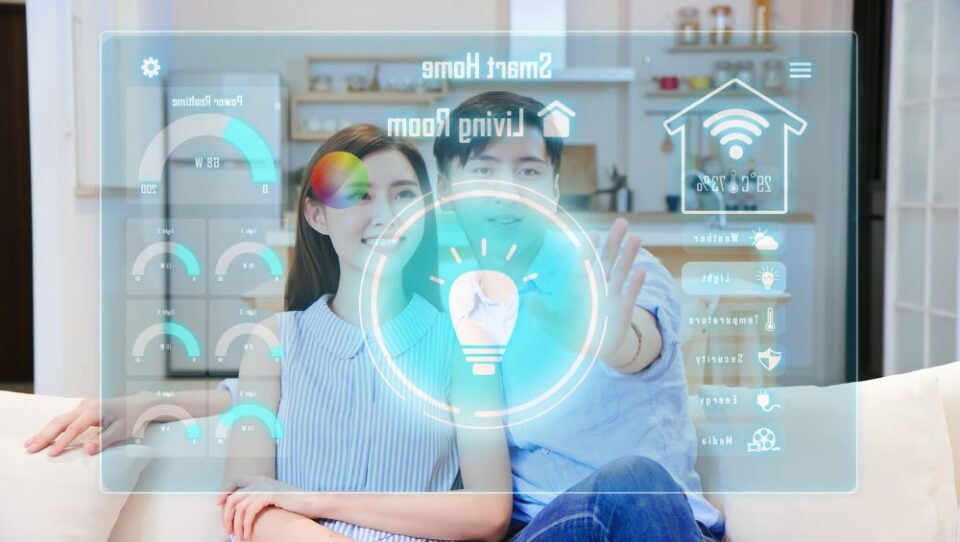
3 Popular Types of Smart Assistants
Setting up a smart home means making sure all your devices work well together. They need to “talk” to each other in the smart home setup you choose – and not all smart devices speak the same “language”.
Start by choosing a primary system, like Amazon’s Alexa, Google Home, or Apple’s HomeKit. This is the basis of your smart home. When choosing a primary system, think about how easy it is to use the device’s apps since this is where you’ll manage settings and controls.
From there, when you add new devices, make sure they’re compatible with this system. This ensures everything runs smoothly. A cohesive system makes setup and day-to-day use simple – plus, you’ll avoid potential problems down the road (like wasting money on a device that doesn’t even connect with your main system).
Google Home: Google Assistant, the voice assistant, is the main strength of the Nest ecosystem. It responds quickly to voice commands, is smart enough for your speaking style, and understands complex commands or follow-up requests that might confuse Alexa or Siri. If you have an Android device, Google Assistant is built in, and the Google Home app provides quick access to smart home shortcuts.
Amazon Alexa: With a head start in the smart home space, Amazon’s Alexa boasts the widest range of compatible products. You can ask it anything, although its answers aren’t always as accurate as Google’s. Alexa supports a wide selection of Skills (like smartphone apps) developed by third parties, and its smart speakers and displays are the most affordable, especially if you wait for great discounts like Prime Day. If you want to control Alexa from your phone, you need to install the Alexa app, and it must be open before you can give voice commands.
Apple HomeKit: HomeKit is the most limited of the three but still the best choice for iPhone owners. Apple’s tighter control over third-party certification ensures smooth operation for supported devices. You won’t find as many HomeKit-enabled devices as you would with Alexa or Google Assistant, but the major smart home brands are present. Apple’s Home app is elegant and easy to use, devices are easy to set up, and its platform is the most secure. By default, Apple collects less data and data is kept on the device whenever possible. If you want to control your devices while you’re away from home, you’ll need a HomeKit hub, such as a HomePod Mini, Apple TV, or iPad. Siri is also the weakest of the three voice assistants, although it’s getting better.
How Much Does It Cost to Build a Smart Home?
Building a smart home is fun, but you need to have a clear budget to avoid overspending.
First, think about what you want most: convenience, energy savings, or making your home safer.
Choose equipment that fits these needs. Research different brands to find good quality at a reasonable price – and remember that the most expensive item isn’t always the top choice. You can start with basic items like:
- Smart thermostat
- Smart lighting
You can buy a basic smart light bulb for as little as $10, while a comprehensive smart security system can cost you several thousand dollars. So, it’s best to start small and add more devices over time. This way, you can manage costs and learn as you go.
Also, pay attention to additional costs like monthly fees or setup fees.
And remember, while new technology is exciting, make sure it truly aligns with your priorities. With thoughtful budgeting, building a smart home won’t drain your wallet.
Read more: What is The Cost of A Smart Home? A Detailed Pricing Guide
Conclusion
Configuring your smart home is an exciting journey that can revolutionize the way you live and interact with your living space. With the right devices, hub, and thoughtful setup, your home can become a hub of convenience, energy efficiency, and security. By addressing security concerns and staying vigilant with updates and maintenance, you can enjoy a seamless and safe smart home experience. So, get ready to embrace the future of home living, where your smart home works for you, making your life easier, more efficient, and ultimately more enjoyable.

